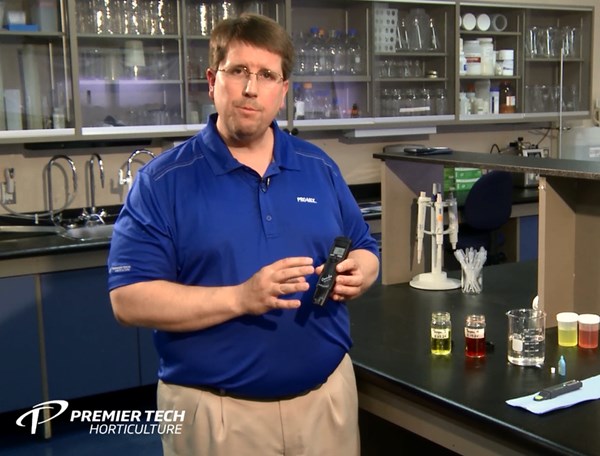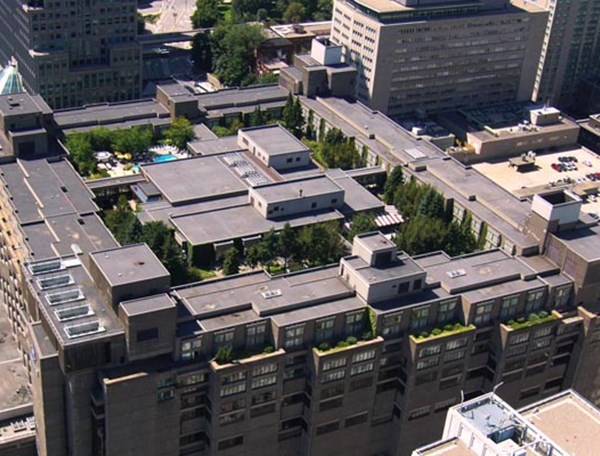Training Center
Stabilize a Growing Medium's pH with Water and Fertilizer
Thursday, September 7, 2023 | Ed Bloodnick
The buffering capacity of a growing medium is defined as the resistance to pH change during the crop cycle. Different soilless growing media have different buffering capacities. This buffering capacity impacts the ability of plants to use the nutrients supplied by fertilizers. Depending on the growing medium's volume in the pot, plant type and the amount of limestone in the growing medium, pH can change rapidly within a week, in certain cases due to the buffering capacity. For growers, it is important to closely monitor pH to avoid swings in a growing medium's pH, which can lead to potential nutrient deficiencies or toxicities.
Most growing media made with sphagnum peat moss require the addition of limestone in order to have an adequate pH for most horticultural crops. The limestone added gives the medium a stabilized pH of 5.5-5.8, in most cases. Generally, media manufacturers may have variable residual lime in their media. This is important to know, because the selection of fertilizers for specific crops needs to be considered in relation to residual lime. This will affect the long-term buffering capacity.
Types of limestone
Two types of limestone are often used in growing media. Calcitic lime is mostly calcium carbonate and is more reactive than the other type, dolomitic limestone. Dolomitic limestone contains calcium and magnesium carbonate, which is less soluble and provides a longer residual action than calcitic limestone. Dolomitic limestone will provide a longer buffering capacity and a slight input of magnesium.
How to know if the growing medium has a lot of residual lime
Growing media can be incubated with water for a couple days (1:2 media:water) and pH monitored every second day for a week for an indication of the residual lime. When there is residual lime, the pH will continue to rise for 7 days and can go up almost 1 pH unit. Monitoring should be done on containers out of the greenhouse and covered to avoid water evaporation.
Fertilizer selection
Considering the water analysis (water alkalinity), the medium's buffering capacity, residual lime and the optimum pH for the plant species, there is a considerable selection of soluble fertilizers to choose from. Most fertilizer companies have charts that help in choosing the right product. Some fertilizers are potentially basic (B) and others are potentially acidic (A) as indicated on their label. These values give a good idea of the amount of acidic or basic ions that will be neutralized. A or B expresses the amount of CaCO3 in ppm or in kg / ton. The higher the number, the greater the fertilizer’s potential acidity or basicity.
Plant Species - Optimum Growing pH
Plant crops are more and more pH specific for optimum growth in soilless growing media. There are 3 main groups and most fertilizer companies have developed formulas for these plants:
Geranium plant group
This plant group requires a growing pH of 6.0 to 6.6 and is sensitive to Iron and Manganese toxicity if the pH goes down below its optimum level. Some plant species in this group (e.g.: geranium) also acidify the growing medium because the plants release acidifying ions. The fertilizers recommended for this plant group must not acidify, so they should have a basicity value or irrigation water with adequate alkalinity. Regular pH monitoring is important in order to be sure the plants are grown at a proper pH.
Petunia plant group
Prone to iron deficiency, which means they require a low growing medium pH, between 5.4 and 6. The fertilizers for this plant group should have a high acidity potential in order to limit pH rise during the crop, especially if the water has strong alkalinity. Greenhouses that have high alkalinity in their irrigation water generally have to acidify the water with an acid (e.g.: sulphuric, phosphoric, or nitric acid).
General plant group
Plants in this group are capable of growing at a pH of 5.8 to 6.2 and are not prone to iron toxicity or deficiency. This group covers a large number of popular plants like Osteospermum and Impatiens.
Monitoring pH and soilless media analysis
Monitor a growing medium's pH and EC frequently while plants are growing. Readings should be made with excess run-off after irrigation from the bottom of the pot (pour-through method) or medium samples from the bottom 2/3 of the pot. Samples should come from more than just one pot. Ideally 10 pots should be sampled. Use the 1:2 (media: water) ratio with water and mix in a clean cup. Also, pH and EC meters are great instruments, but must be calibrated on a regular basis for accuracy.
Media analysis and what to check for
Saturated Media Extraction (SME) analysis is a common method used in the industry to measure what is available for plant growth at the start of the crop. pH and EC are important to be at the desired level for optimum crop growth. pH and electrical conductivity (EC) in the water can be measured on a regular basis with a portable metre in the greenhouse. The initial media analysis of unused media can give indication of the calcium and other major nutrients. Most manufactured media have a starting pH between 5.5-6.2 and EC of 0.8-1.2. As the crop grows, especially for poinsettias or other long-term crops, the targeted values can be tracked by sampling the medium and having it analyzed in an accredited lab to be sure the plants are getting the right fertility.
For more information on methods and guidelines, consult Paul Fisher and William Argo’s book on understanding pH management.
For more information, contact your Premier Tech Grower Services Representative:
 |
 |
 |
 |
|---|---|---|---|
|
Ed Bloodnick |
Nathan Wallace-Springer |
Lance Lawson |
Victor Brantly |
 |
 |
 |
|
|
Troy Buechel |
Susan Parent |
Jose Chen Lopez |
Reference:
Argo, W.R. & Fisher P.R. Understanding pH Management For Container-Grown Crops. 67p. Meister publication.
PRO-MIX® is a registered trademark of PREMIER HORTICULTURE Ltd.
Related Articles
-
Horticulture Specialist from our Grower Services team, Troy Buechel, explains how to calibrate pH & EC meters.
-
Criteria for Growing Media for Roof Top Gardening
In this article, we will discuss the ideal growing medium and properties required for roof top gardening.

 Where to find our products
Where to find our products





